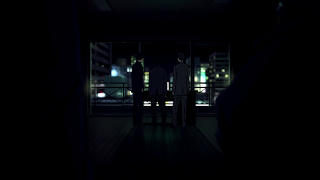Mushishi Zoku Shou: Path of Thorns

Darkness and isolation were the major themes of “Path of Thorns.” Simple usage of different shades of black background, single subject composition (the hut), and slow tilt movement communicated these themes powerfully. While shots of darkness dominated this double episode, the more interesting part is the use of small light, specifically candle light. If the shots were constantly dark, it could start feeling monotonic and lose that haunting effect. The shots of candle light provide contrast that help exaggerate the darkness. Losing that small amount of light is more haunting than constant darkness.








